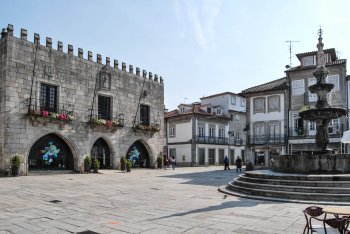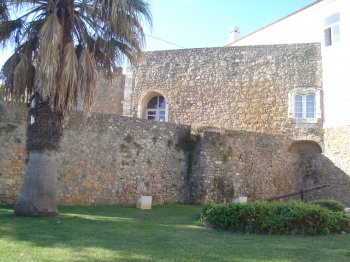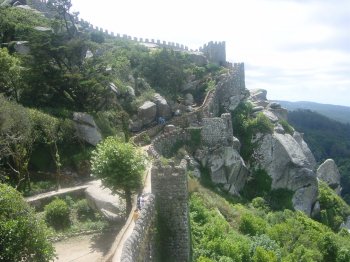Explore the best places
Results for castelo in Portugal
Pena da Letra no Castelo de Penas Róias
- heritage
Penas Roias
5200-311, Mogadouro
Rock art shelter with schematic paintings, showing a set of five anthropomorphic figures oscillating between 13 and 17 cm. It is located at half a hillside of morro do Castelo de Penas Roias.
Castelo da Lousã / Castelo de Arouce
- heritage
EM580
3200, Lousã
Castle located on the outskirts of the village of Lousã mountain countryside. Consists of the donjon, torn by loopholes for a small irregular fence and some cubelos. Its entrance is flanked by two turrets and three more are distributed along the walls. The whole Castle is in Silurian shale, rock of the region, except the door trim of the keep, which is white stoneware. During the Reconquista, this castle was assumed as a strategic point, locking the Moorish incursions from the vale do Zêzere.

Castelo de Rebordãos / Castelo de Tourões
- heritage
EN15
5300, Rebordãos
This ancient castle, an elliptical plant, there are only a few ruins on a rocky peak.
Paços Municipais de Viana do Castelo
- heritage
Praça da República
4900-520, Viana do Castelo
The construction was initiated during the reign of Dom Manuel I and finished in the reign of Dom João III. It has two floors, entirely built in granite. The lower floor is formed by a shed with thre ogival arches. In the upper floor there are three windows with balconies. One can also view, on the top of the windows, a royal shield, an armillary sphere and a sailboat, heraldic symbol of Viana do Castelo.

Torre do Relógio de Castelo Branco
- heritage
Rua do Relógio
6000-195, Castelo Branco
In the heart of the historic area, stands the imposing Torre do Relógio, unavoidable in the landscape of Castelo Branco, as it is visible from the most diverse locations. Its creation is related to the expansion process of the city and the enlargement of the limits of the walls, since it was created where there was an old tower of the outer wall, adapted for its current functions in the 19th century. Its characteristic hourly chimes are heard by residents and visitors alike.

Castelo da Guarda / Torre de Menagem
- heritage
Rua Dona Maria Luísa Godinho
6300-758, Guarda
At the highest point of the city, at 1056 meters of altitude, is the Castelo da Guarda, better known as Torre de Menagem. The town was inhabited by order of Dom Sancho I, who granted it a charter and privileges in 1199, and transferred the seat of the diocese to here. This first charter was confirmed by the same king in 1217, 1229 and, later, in 1254, by Dom Afonso III. In 1510, Dom Manuel granted it a new charter and granted his son, Dom Fernando, the title of Duke of Guarda.

Cabanal do Castelo
- heritage
Largo do Castelo
5210-188, Miranda do Douro
19TH century building, where was the fair of Miranda do Douro, featuring support facilities at fairs, in which installed some merchants. It is a rectangular plant cabanal with main façade rhythmic by fourteen quadrangular monolithic pillars.
Castelo dos Governadores
- heritage
Jardim da Constituição
8600, Lagos
This castle retains little of its initial construction (dating back to the 14th century), as it has undergone many changes over time. Highlight for a Manueline window, from where Dom Sebastião attended the mass that preceded his departure to Alcácer Quibir.

Castelo dos Mouros
- heritage
Cimo da Serra
2710-405, Sintra
Castle built in the 12th century, suffering after several modifications, above all in the reign of Dom Fernando II. It is from this period that possibly date his current appearance. The primitive Moorish Castle subsist the cistern, the line of battlements and square towers which reinforce the wall. Within the grounds there is a Romanesque chapel in ruins.

Castelo dos Mouros
- heritage
Alfarela de Jales
5450, Alfarela de Jales
Populated with traces of occupation in the Roman era. Is fortified and presents two walls, Tower and a moat.